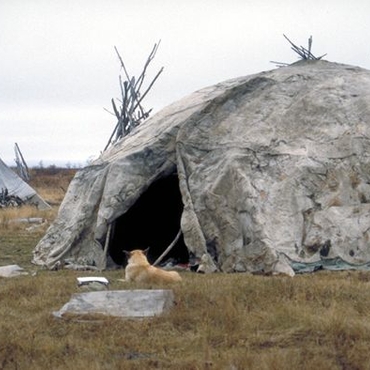
- Home
- Explore the site
- The habitations, camps and their surroundings
- The habitations
While there was some variation in the layout, the space inside the habitations was always organised in the same way, reflecting a cultural tradition. Habitations could accommodate more or less large families, with a mixture of adults and children.
Tents of varying weight
The habitations were all circular, with a diameter of approximately 5 metres, and had a central hearth. The complexity of the layout varied. Some contained stone features, such as a circle of large stone slabs marking the outline of the tent or lines of smaller stones marking out walls inside the shelter. However, others contained none. The same diversity could be seen in the hearths at the centre of the habitations: there were large hearths covered in stones, firepits with stone borders, or even more minimal structures.
Several factors may explain the variety in the structures: the length of the stay, the season, and perhaps the social status of the occupants, despite the communities’ reputation for being fairly egalitarian. It is thought that the more structured habitations may have resembled the Siberian yaranga.
Division of the domestic space
The space inside the tents was organised. Tasks were organised around the central hearth, a collective space par excellence. On one side, tools and weapons were manufactured and repaired, and on the other, meals were prepared and the fire was maintained. The spaces around the edges of the shelter were for rest.
Socially differentiated spaces
The organisation inside the tents suggests they were probably divided into male and female spaces. The space may also have been divided to reflect the competence of the flint knappers and their economic role in the group.




